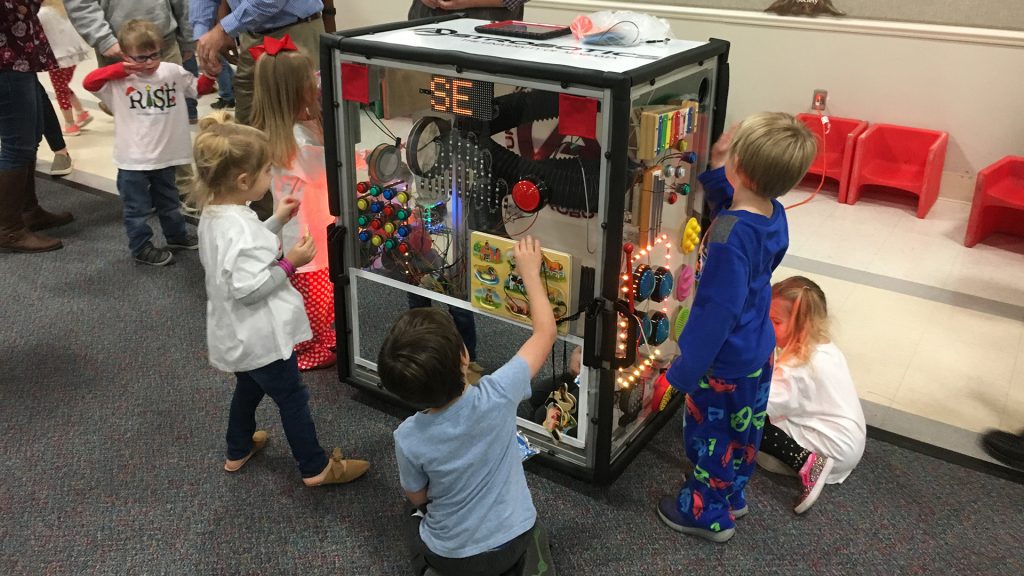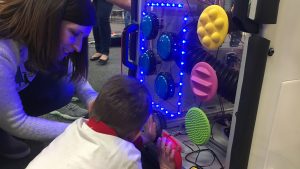A University of Alabama student team is continuing a three-year tradition of local outreach projects.
 The University of Alabama Astrobotics team and a group of engineering senior design students partnered with the RISE Center, a school for infants and preschoolers with and without special needs on UA’s campus, to provide the children with a sensory cube to assist with in-class therapy.
The University of Alabama Astrobotics team and a group of engineering senior design students partnered with the RISE Center, a school for infants and preschoolers with and without special needs on UA’s campus, to provide the children with a sensory cube to assist with in-class therapy.
The sensory cube, called the Stimulation Station, is a 4-foot-tall, 2-foot-wide machine that was designed around the idea of an electronic fidget cube. This device helps with physical therapy, occupational therapy and music therapy in a way that is engaging for the children.
“It increased the [engineering] students’ awareness of the needs that they can help with,” said Angela Parham, a physical therapist for the RISE Center. “It gave them an opportunity to offer their services in a way that meets specific needs for our children. It has been a learning experience for all of us.”
The Stimulation Station took one year to complete and was delivered to the RISE Center during a holiday party in December 2018. The cube is made up of three sides of interactive stimulation that the children can use to assist with different forms of therapy such as helping with muscle strength and the association of sounds to objects.
“Sometimes they don’t even know they’re doing [therapy], because they’re just playing,” said Joylyn Boggs, RISE service coordinator. “The sensory cube provides a fun way to explore all of the areas of development.”
Specific aspects of the cube include a music center, push buttons to control various light patterns, mechanical games, elements that teach cause-and-effect, and a mirror to help with early developmental stages of crawling and standing. The Stimulation Station is made of clear Plexiglas to show the kids the wires and the LED blinking lights on the computers inside the machine.
 The cube has proven beneficial for students of all ages at RISE with children starting from 8-weeks old to 5- and 6-year-olds. The project has also proven beneficial to the UA students involved with this.
The cube has proven beneficial for students of all ages at RISE with children starting from 8-weeks old to 5- and 6-year-olds. The project has also proven beneficial to the UA students involved with this.
Dr. Kenneth Ricks, electrical and computer engineering associate professor and Astrobotics faculty adviser, stresses the importance of students gaining a deeper perspective on the different challenges others are facing in life. Meeting the RISE students can do that. And, knowing the engineering students widens the world for the RISE children, too. “Let’s see what we can do to introduce K-12 students to engineering and science and then show them how STEM can help the disabled.”
In addition to members of the Astrobotics team, the UA students that participated in the designing and building process of this project were Kevin Townsend, Kristin Harris, Cody Colangelo and Trent Gibson.
“We’ve been doing projects like this for the past few years. And we really enjoy doing projects like this, and they’re really special to us,” said Max Eastepp, senior Astrobotics team lead. “We’re building something that is not just going to sit in a room, it’s really helping children and people in need.”
